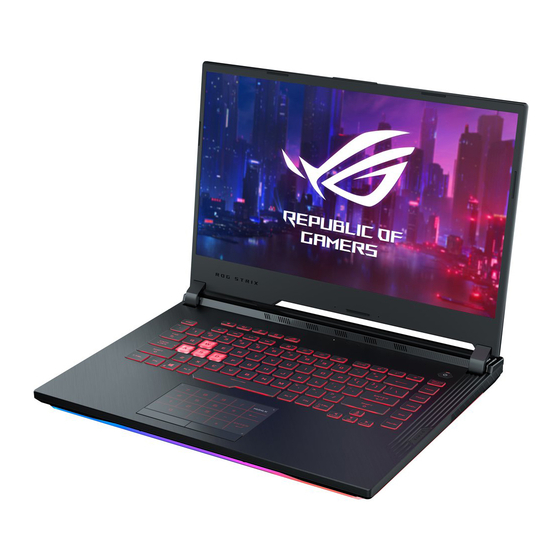
Table of Contents
Advertisement
Advertisement
Table of Contents

Summarization of Contents
Chapter 1: Hardware Setup
Getting to know your Notebook PC
Overview of the notebook's hardware components and layout.
Top View
Details the components and features visible on the top of the notebook.
Bottom
Details the components and features visible on the bottom of the notebook.
Right Side
Details the ports and features located on the right side of the notebook.
Left Side
Details the ports and features located on the left side of the notebook.
Rear View
Details the ports and features located on the rear of the notebook.
Chapter 2: Using your Notebook PC
Getting started
Instructions for initial setup, including charging the notebook.
Using the touchpad
Comprehensive guide to touchpad operations, including gestures and customization.
Using the keyboard
Explanation of function keys, Windows keys, and numeric keypad usage.
Chapter 3: Working with Windows® 10
Starting for the first time
Step-by-step guide for the initial configuration of Windows 10.
Start menu
Navigating the Start menu for accessing programs, apps, and settings.
Windows® apps
Overview of Windows apps displayed in tiled format for easy access.
Working with Windows® Apps
How to launch, customize, move, resize, and unpin Windows applications.
Task view
Switching between opened apps and programs using the task view feature.
Snap feature
Displays apps side-by-side, allowing work or switching between apps.
Action Center
Accessing notifications and quick settings through the Action Center.
Other keyboard shortcuts
Useful keyboard shortcuts for launching applications and navigating Windows 10.
Connecting to wireless networks
Instructions for connecting to Wi-Fi and Bluetooth networks on the notebook.
Connecting to wired networks
Steps to configure dynamic or static IP network connections via LAN.
Power Management
Procedures for turning off the notebook and putting it into sleep mode.
Chapter 4: Power-On Self-Test (POST)
Using POST to access BIOS and Troubleshoot
Explains POST, accessing BIOS settings, and troubleshooting.
BIOS Settings
Details various BIOS settings including EZ Mode, Boot, Security, and Save & Exit.
Update BIOS
Step-by-step guide for updating the notebook's BIOS.
Recovering your system
Options and procedures for restoring or refreshing the system to its original state.
Tips and FAQs
Useful tips for your Notebook PC
Practical advice for maximizing notebook performance and data security.
Hardware FAQs
Answers to common questions regarding notebook hardware issues.
Software FAQs
Answers to common questions regarding notebook software and OS issues.
Appendices
Overview
Introduction to regulatory information, standards, and compatibility declarations.
Federal Communications Commission Interference Statement
Compliance statement regarding FCC rules for digital devices.
FCC Radio Frequency (RF) Exposure Caution Statement
Safety statement regarding radio frequency exposure limits.
Compliance Statement of Innovation, Science and Economic Development Canada (ISED)
Compliance statement for Canadian regulations on radio equipment.
UL Safety Notices
Safety precautions related to electrical connections and battery usage.
Nordic Lithium Cautions (for lithium-ion batteries)
Warnings and instructions regarding the handling and replacement of lithium-ion batteries.










Need help?
Do you have a question about the Strix G GL531 GL531GU-WB53 and is the answer not in the manual?
Questions and answers